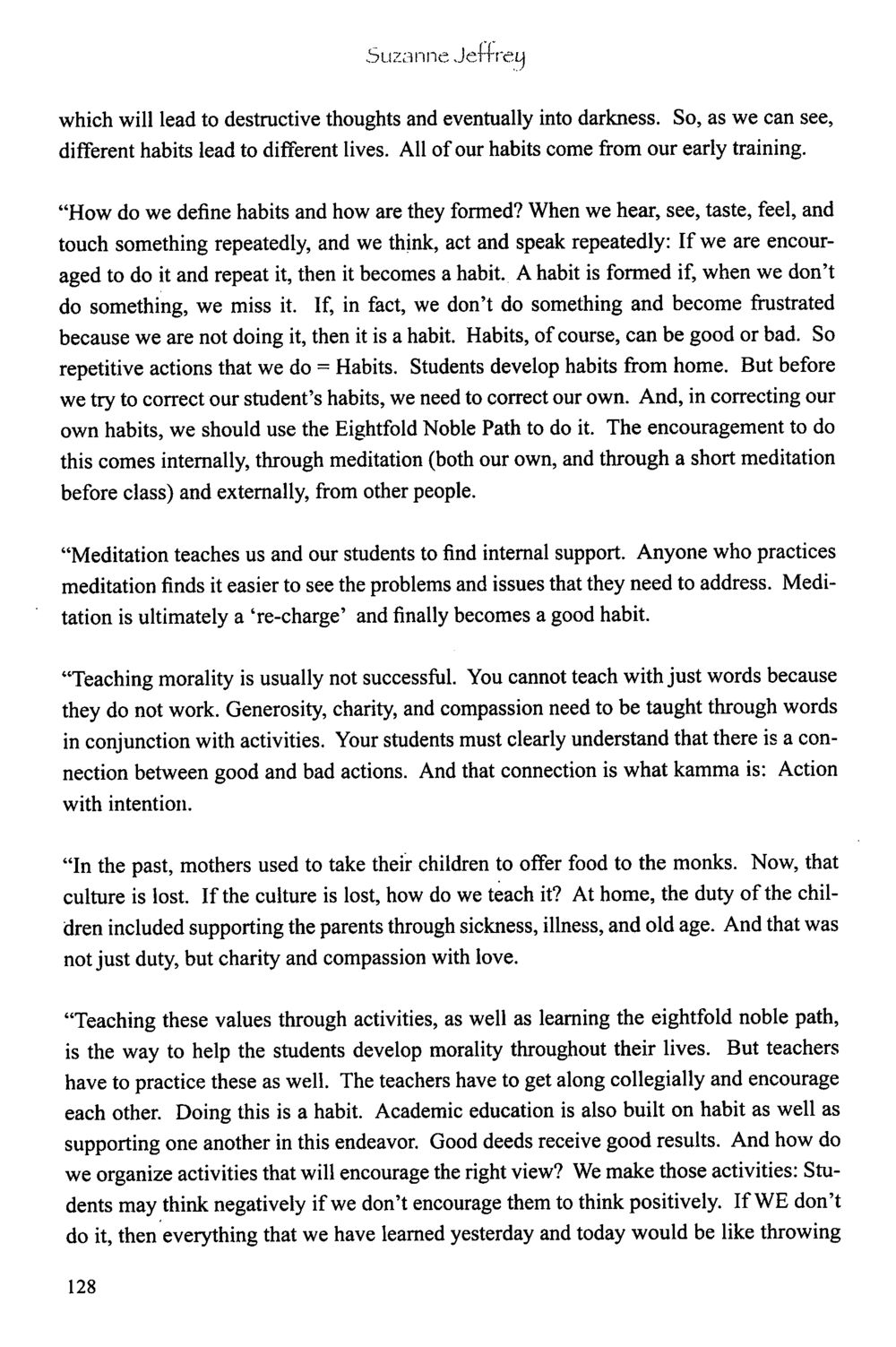The Formation of Habits and Teaching Morality : หน้า 129/164
The Meeting with a Dhamma Master : หน้า 129/164 Explore how habits are formed, their impact on life, and the importance of teaching morality through actions and meditation techniques.
1 ครั้ง

สรุปเนื้อหา
This text discusses how habits develop from early training and repeated actions, and emphasizes that both good and bad habits influence our lives. It highlights the need for teachers to first correct their own habits before guiding students, utilizing the Eightfold Noble Path and meditation as fundamental tools for this transformation. The importance of teaching morality through meaningful activities rather than mere words is underscored, along with the cultural shifts that impact understanding of compassion. Active participation in charitable actions is crucial for teaching values like generosity, and fostering connections between good and bad actions is essential in education. The passage advocates for supportive environments among educators and the organization of activities that promote positive thinking in students, thereby shaping their outlook and behaviors for the future. Good deeds yield positive results, making it vital to instill these principles within academic frameworks.
หัวข้อประเด็น
- Formation of Habits
- Role of Meditation
- Teaching Morality
- Importance of Actions
- Impact of Culture on Values
- Teacher's Role in Education
- Positive Thinking in Students
- Eightfold Noble Path
ข้อความต้นฉบับในหน้า
หน้าหนังสือทั้งหมด




































































































































































